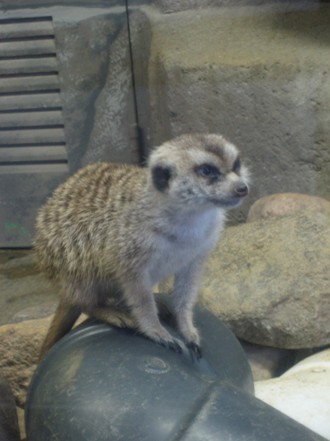Interesting Facts (Did You Know?)
Meerkats are FASINATING animals! I have learned so many new things about the meerkats. So I will share with you a few things that I found out about these social motivated carnivores.
I chose this
organism, meerkat, because I wanted to
learn more about their daily activities
and how they survive in the wild
compared to captivity.
Also, I had to think of something
that students last year didn’t pick.
To check out other organisms
click
here. When
most of us think about meerkats the
movie Lion King might run in our
heads, so instead here are some
interesting things about this creature.
Something that I had no idea
about is meerkats have a very complex
social structure. At
the top of the group is the alpha male
and alpha female in which they do most
of the breeding. Next on the totem pole
of hierarchy comes the beta male and
beta female their roles are to serve the
alphas and then leave the group for
better breeding opportunities.
Then pups are born which are the
baby meerkats at the age of birth to ten
months. Finally there
are the meerkats that stand guard and
watch for predators they are called
sentries. When I went to the Milwaukee
County Zoo in
Also, in the wild
the color of their coat varies in each
geographical section.
The meerkats are on the International
Union for Conservation of Nature and
Natural Resources (IUCN) list of
Threatened Species but this was assessed
in 1996 and meerkats were a species of
least concern. The
name meerkat has a special meaning in
the Afrikaans, South African, language.
The name meerkat means lake or
marsh cat. Something
concerning the
nutrition
of the meerkat is that they can eat
poisonous snakes or scorpions and not
get killed by the venom.
Some animals that are very
similar to the meerkats are the yellow
mongoose and the bush-tailed mongoose.
The yellow mongoose is like the
meerkat because they too are social
animals living mainly in the southern
part of
What do Meerkats sound Like????


* This photo of Sashie at the Milwaukee County Zoo shows that she likes to know what is going on around her. This is part of the meerkat's nature because in the wild they are constantly looking for predators.
Amanda Hustad Copyright © 2007, Design by: Sunlight webdesign